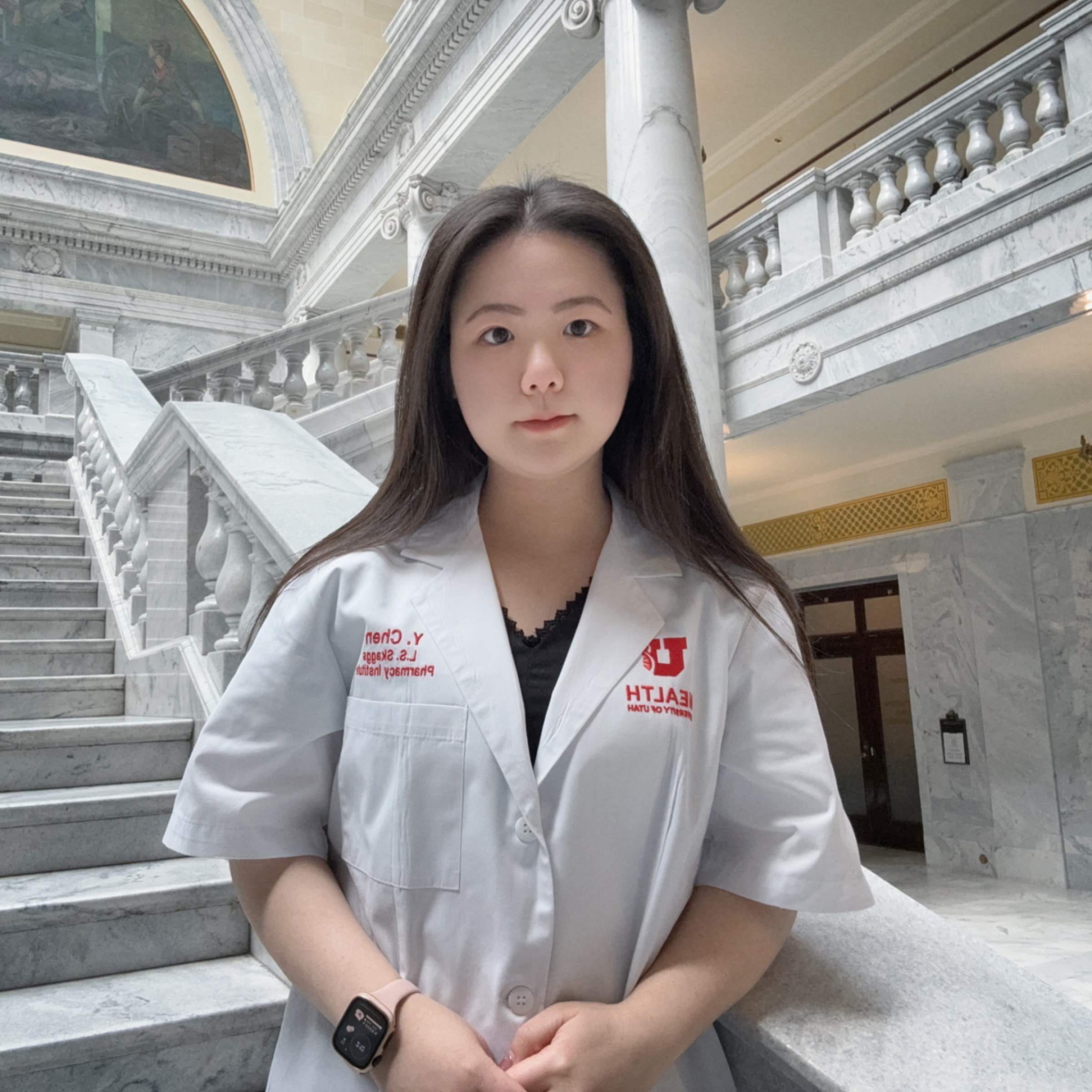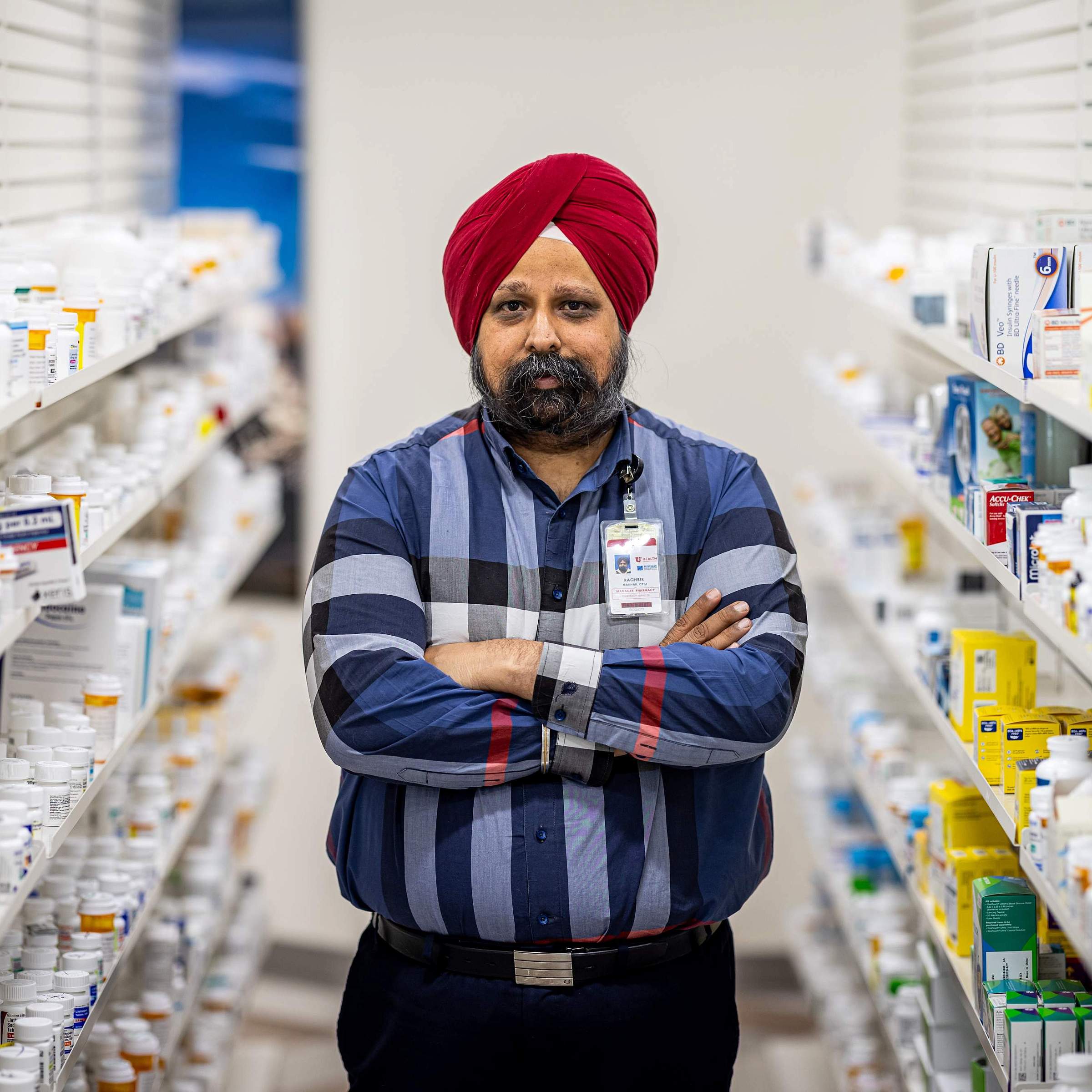

New Pathways for Pharmacy Technicians
By Lauren McKinnon
As a child, Zarifa Nurmukhamedova watched her father, a doctor in Uzbekistan, visit local families. “I grew up in an environment where talking with patients is a part of me,” Nurmukhamedova says.
In her hometown, she earned a degree and worked as a pharmacist. In 2016, she relocated to the United States, but her education did not meet the standards for the National Association of Boards of Pharmacy. So, despite her professional experience, Nurmukhamedova was unable to practice in the U.S. Other jobs offered to her were low-paying and mundane. She worked at a Sephora warehouse to pay the bills but missed her career in pharmacy.

FACING SIMILAR HURDLES
When applying for work in a new country, many New Americans encounter similar barriers. Individuals are often required to recomplete their degrees or pass a board-certified exam proving that their experience compares to that country’s academic standards. The process can be tedious and expensive, especially for anyone adjusting to a new culture without family support.
To stay involved in the world of medicine, Nurmukhamedova earned her pharmacy technician license from Salt Lake Community College. The two-year certification was affordable and qualified her to assist pharmacists. In 2020, she took a job as a pharmacy technician at University of Utah Health.

She joined University Hospital during the height of the pandemic and describes her day-to-day life as busy but also inspiring. “Talking to the students, it made me miss school,” Nurmukhamedova says with a slight smile.
Students, staff, and professors encouraged her to apply to pharmacy school. Earning her doctor of pharmacy degree could jump-start the career she first started in Uzbekistan.
The idea of starting over was intimidating, though. Nurmukhamedova was unsure if she could afford tuition, and she knew that learning new practices, conducting research, and operating advanced technologies wouldn’t be easy.
But her experience working as a pharmacy technician rearranged the stones in Nurmukhamedova’s path.
A FREE EDUCATION FOR TECHNICIAN TRAINEES
Stories like Nurmukhamedova’s represent an important shift in the pathways available for medical education. Utah, the third-fastest growing state in the U.S., needs more health care workers. Before 2020, a nationwide shortage of people entering the field of pharmacy caused U of U Health’s Pharmacy Department to be constantly short-staffed. When the COVID-19 pandemic struck, those shortages were exacerbated. Pharmacy leaders and pharmacists often had to step into the role of technicians just to maintain daily operations.
With new drugs entering the commercial market every day, and one in six people over the age of 60 saddled with increased medication needs, pharmacy technicians are essential. Without enough of them, wait times increase and patients don’t receive the quality attention they deserve.
Kavish Choudhary, PharmD, MS, recognized the need for more licensed pharmacy technicians. Chief pharmacy officer at U of U Health, as well as an associate dean at the University of Utah College of Pharmacy, Choudhary imagined a fully funded technician trainee program that would remove financial barriers for those seeking new work opportunities. As a result, “We are seeing candidates from varied and sometimes disadvantaged backgrounds,” he says.

Working together with Charlton Park, MBA, MHSM, system chief financial and analytics officer at U of U Health, and Raghbir Makhar, CPhT, pharmacy technician manager, they created an innovative program: no tuition for technician trainees, with all students offered jobs upon completion.
In this case, the job fulfills the 180 hours of externship needed for licensure, a requirement students would normally pay for themselves or complete on a volunteer basis. This program is made possible because U of U Health participates in the 340B Drug Pricing Program, reinvesting savings into the tech trainee program and similar initiatives that develop and train the workforce to enhance patient services, provide more comprehensive care, and improve lives.
Based online, the program accommodates the schedules of non-conventional students, though anyone can request in-person classes. The remote format and guaranteed work has widened the pool of applicants. Single mothers balancing multiple jobs, individuals looking for a meaningful career shift, and New Americans finding their footing in the U.S. can complete the training program at no cost.
AN AFFORDABLE PATHWAY INTO COLLEGE
More often than not, the program serves as a stepping stone. Students enter the technician trainee program, gain relevant experience and recommendations, and eventually move on to become doctors, nurses, and pharmacists. Yongmin Chen is a recent example of how working as a technician prepares students for higher-paying jobs.
Chen immigrated from China six years ago with the intention of becoming a pharmacist. After receiving her technician license from a different program, Chen was hired at U of U Health.
“It’s preparing me for pharmacy school,” Chen says. “As a tech, you can just shadow the pharmacist and see what they do.” Chen was accepted into the College of Pharmacy, where she (and anyone who transitions from the technician trainee program) can secure paid internships while attending school.
Working alongside U of U Health pharmacists, doctors, nurses, and students allows these trainees to gain experience and the sense of community needed to imagine themselves in similar careers.

For those who want to stick with a pharmacy technician role, the field offers security and growth. Students enrolled in the program earn a livable wage for a single person residing in Salt Lake County. After graduating and receiving their license, U of U Health technicians receive a boost in pay with opportunities for promotion in the future.
Within a year, licensed pharmacy technicians can be promoted to tech II, with a corresponding increase in wages and responsibilities, such as prepping complicated medications and training new employees. In three years, individuals can assume higher leadership roles as a tech III or pharmacy technician manager, with further potential opportunities for growth.
Most students work in and around University Hospital in Salt Lake City while attending school online. But community health centers in Farmington, Park City, South Jordan, and Stansbury offer jobs for students, too. “We really cover a lot of ground,” says Shantel Mullin, PharmD, associate professor of pharmacotherapy in the College of Pharmacy. A leader in the program, she envisions a future expansion where students can secure jobs in rural areas. Outside of Salt Lake Valley, working full-time as a pharmacy technician could lead to a generous income—especially for someone who received a free education.
A FOCUS ON TECH TRAINEE WORK EXPERIENCE
Alongside pathways like this technician trainee program, the College of Pharmacy is working hard to address a broader national shortage of pharmacists. The college made national news in 2022 when it became the first institution in the country to waive the first year of tuition for PharmD students. The school also requires no PCAT score or bachelor’s degree for acceptance, and many students like Chen are admitted with a two-year associate’s degree and completed prerequisite courses in high-level math and science.
Pharmacy school is still competitive, but the University of Utah considers a student’s hands-on experience to be extremely valuable. Relevant work experience as a technician signals to the university that an individual would be well-suited for a career path in pharmacy.
Katie Anderton, a first-year PharmD student, is proud to be in a program that prioritizes overall intelligence and ambition above financial ability or accumulative test scores. With the lowered tuition, she feels the big biggest challenge is no longer financial strain but the bandwidth to complete prerequisite classes.
“I think it’s a reasonable barrier,” Anderton says. “We are here to work hard. [Taking] a holistic view of the things you’ve done outside of class is more important than one PCAT score or if you are wealthy enough to afford it.”

FULLY STAFFED PHARMACIES AND PERSONAL FULFILLMENT
Lowering tuition rates increases opportunities for students, providing relevant work experience for a broader population. Pathways like the tech trainee program also improve patient access to reliable health care and make sure hospitals are no longer understaffed. Raghbir Makhar, pharmacy technician manager at U of U Health, has witnessed firsthand these positive outcomes.
After years of shortages, “We are fully staffed for technicians,” Makhar says. “The past four years have been really helpful because I have 40 people working for me who are in the program. Without those 40 people, I cannot run the pharmacy.”
After working for almost four years as a pharmacy technician, Nurmukhamedova was accepted into the U of U College of Pharmacy in 2024.

“It’s a lot of studying,” Nurmukhamedova says. At times, she feels her coursework takes longer than her peers to complete because of language fluency. “But we can do it... I can do it.”
Now halfway through her first year of school, Nurmukhamedova enjoys studying with classmates, taking courses on patient care, and gaining further real-life experience working on the floor of the hospital. She looks forward to the competitive pay pharmacists earn and feels excited to explore a wide range of specialties.
“I feel like I am welcome,” Nurmukhamedova says confidently. “I never regret I took this step.”
